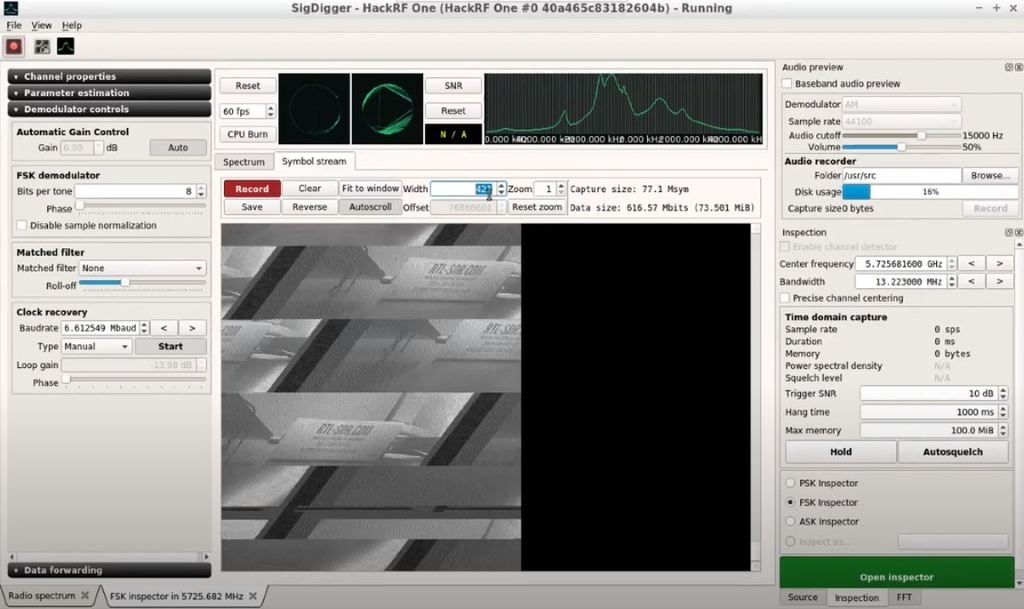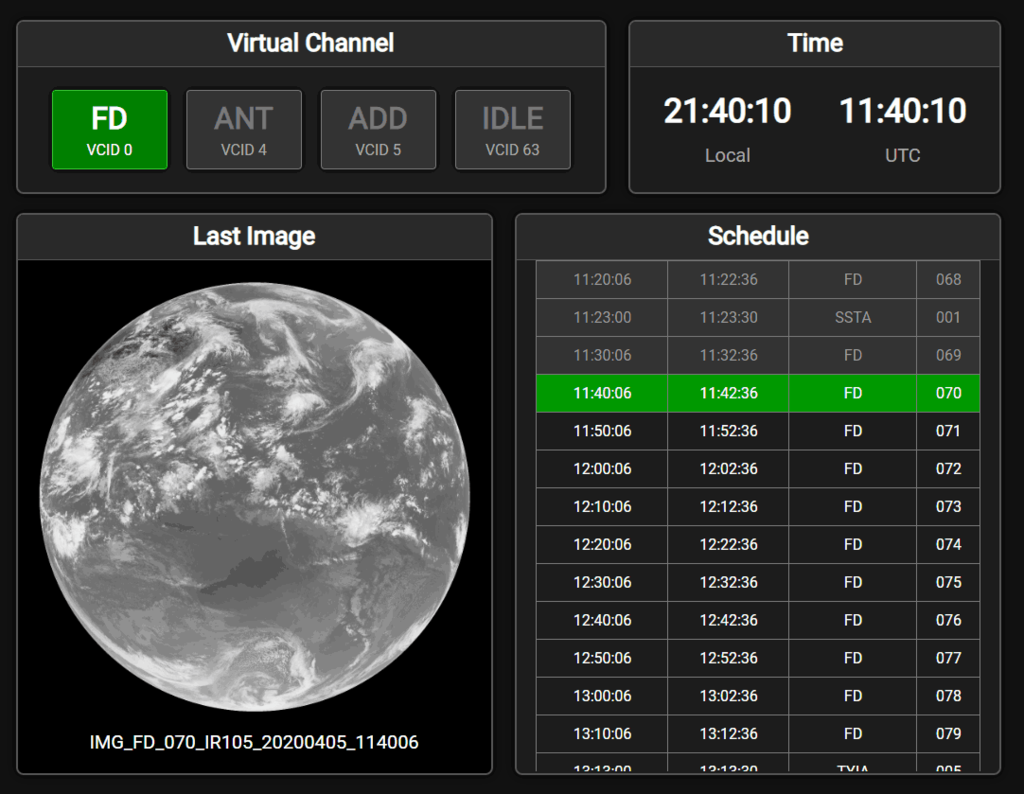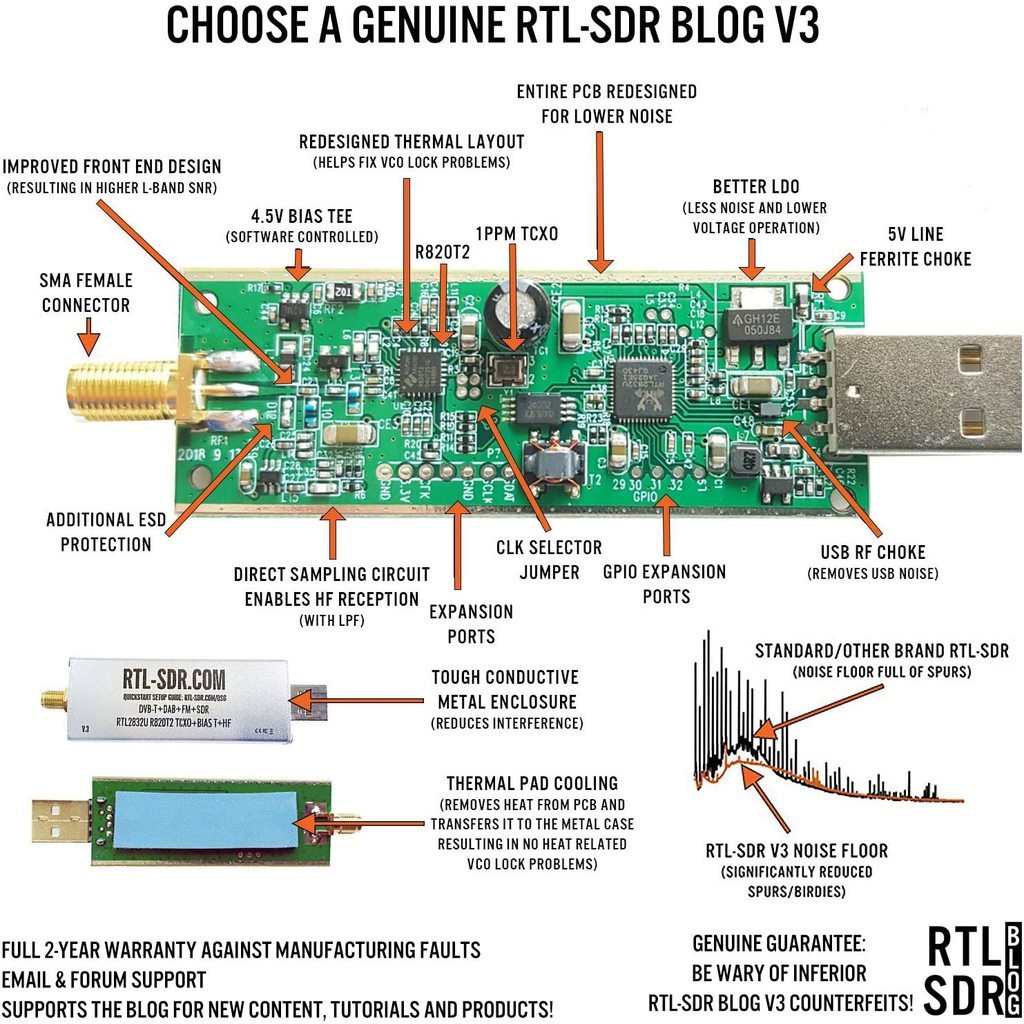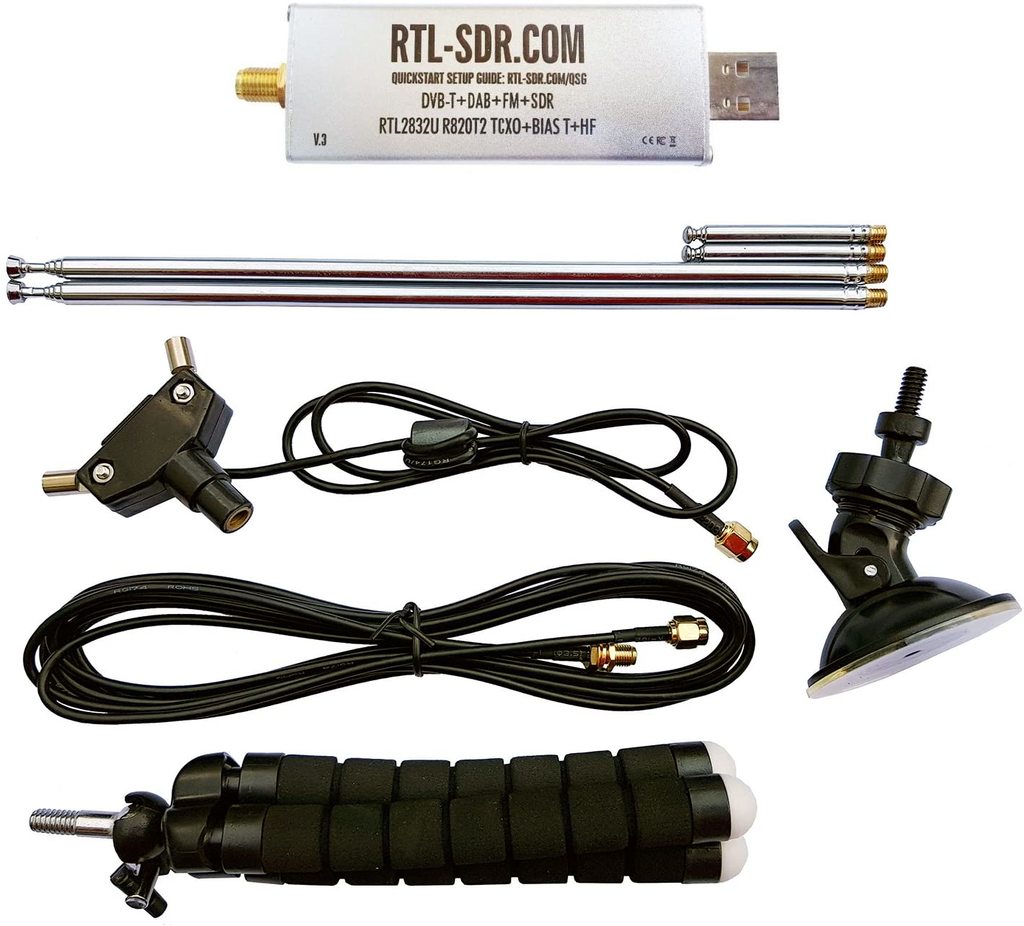Decoding 5GHz NTSC Video from Drones with a HackRF, DragonOS and SigDigger
Over on his YouTube channel Aaron has uploaded a video showing how we can SigDigger to decode analog NTSC video from a drone camera which is transmitted at 5.7 GHz. SigDigger is a rapidly evolving SDR program for Linux and MacOS that has a lot of built in functionality for inspecting signals in more depth. Although not specifically designed for it, the Symbol Stream viewer in SigDigger can be used to display NTSC Analog Video. Aaron writes:
For the most part, the older an analog modulation is, the easier it is to get basic results when decoding. TV receivers were rather dumb back in the day, basically fast fax machines glued to an off-band FM radio receiver. Receiver circuits were also slow, and the signal had lots of invisible blank spaces in the borders so that the cheapest TVs could switch to the next line in time. The invention of Teletext leveraged those blanks in order to carry digital information and color information was embedded as an additional narrowband signal in the gaps in the spectrum.With this in mind I wanted to take a look at decoding analog video transmissions from drones. While some drones have moved to more effective digital compression and channel transmission technologies allowing for high definition video, there’s still drones using RC-like communications and the FPV video link is pure FM-modulated NTSC.
Searching the internet provided few results on how I could go about using low cost equipment, such as the HackRF One, to decode drone feeds. After an extensive search I decided to start looking at Linux based software defined radio applications I was already familiar with. By chance I happened to be working with SigDigger, a free digital signal analyzer. It has been discussed on RTL-SDR.com and more recently on Signal Lounge (https://signal-lounge.com/2020/05/05/sigdigger-for-signal-analysis/). It is also included in my own creation, DragonOS (https://sourceforge.net/projects/dragonos-lts/)
After a brief email exchange with the developer it was brought to my attention that visualizing analog video transmission is possible in SigDigger (although with no color information, of course). Since SigDigger supports the HackRF and the HackRF provides coverage in the 5ghz band, it was now possible for me to try to decode a 5ghz drone video feed. I’ve documented the process and my results on my YouTube channel. I should point out that this is currently a side feature of SigDigger and currently lacks synchronization. The symbol view area I used in the video is not made for this. It is meant to display symbols and symbols patterns which, due to its behavior, can incidentally show the contents of analog TV and weather faxes with lots of manual adjustments.
While the SigDigger developer makes mention of plans to include an embedded generic analog TV viewer and possibly add the ability to automatically sync video, there’s currently no timeframe on when that might become available.

We note that if you're interested in PAL/NTSC decoding, there is also the excellent TVSharp plugin for SDR# available.





